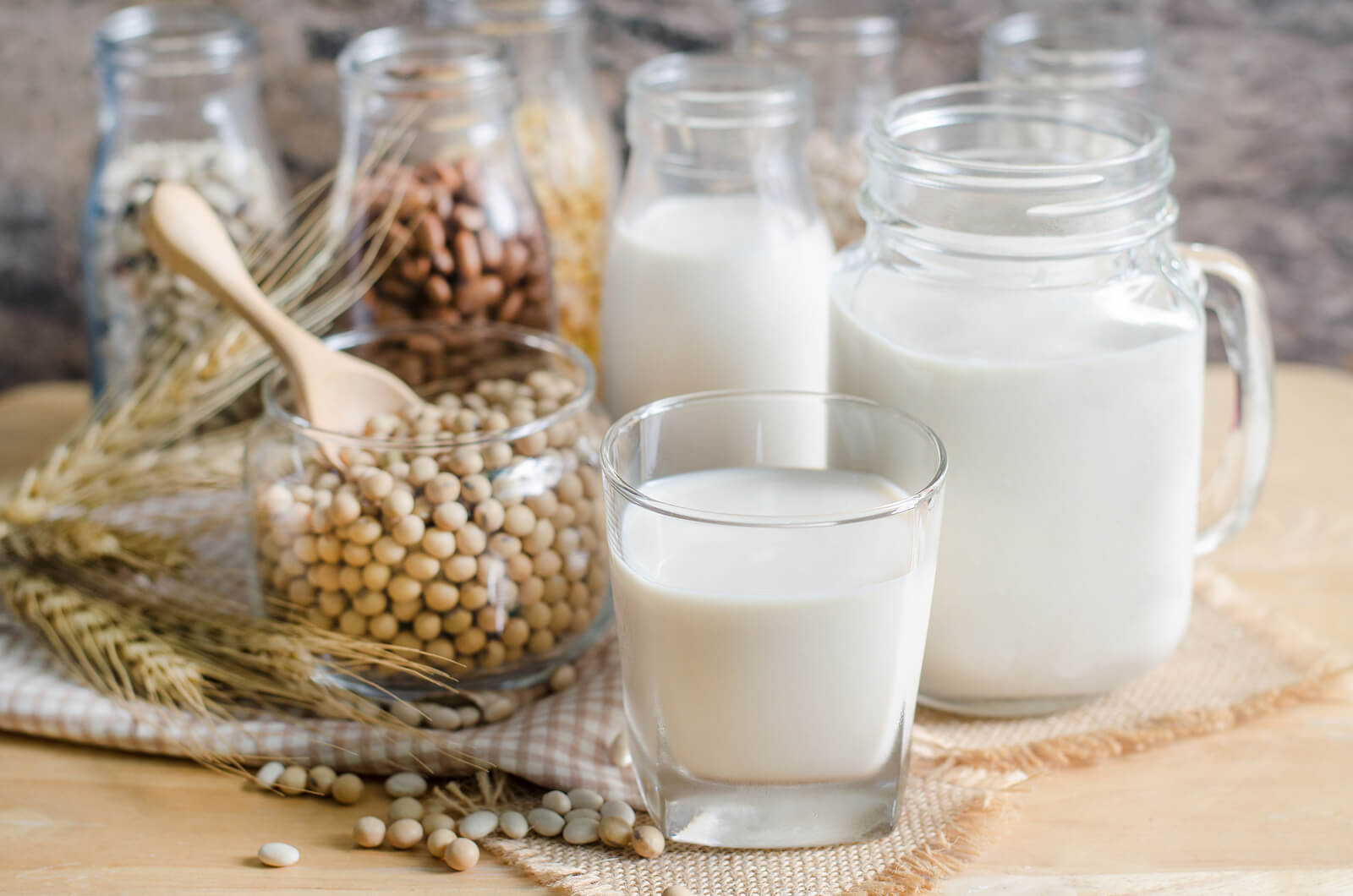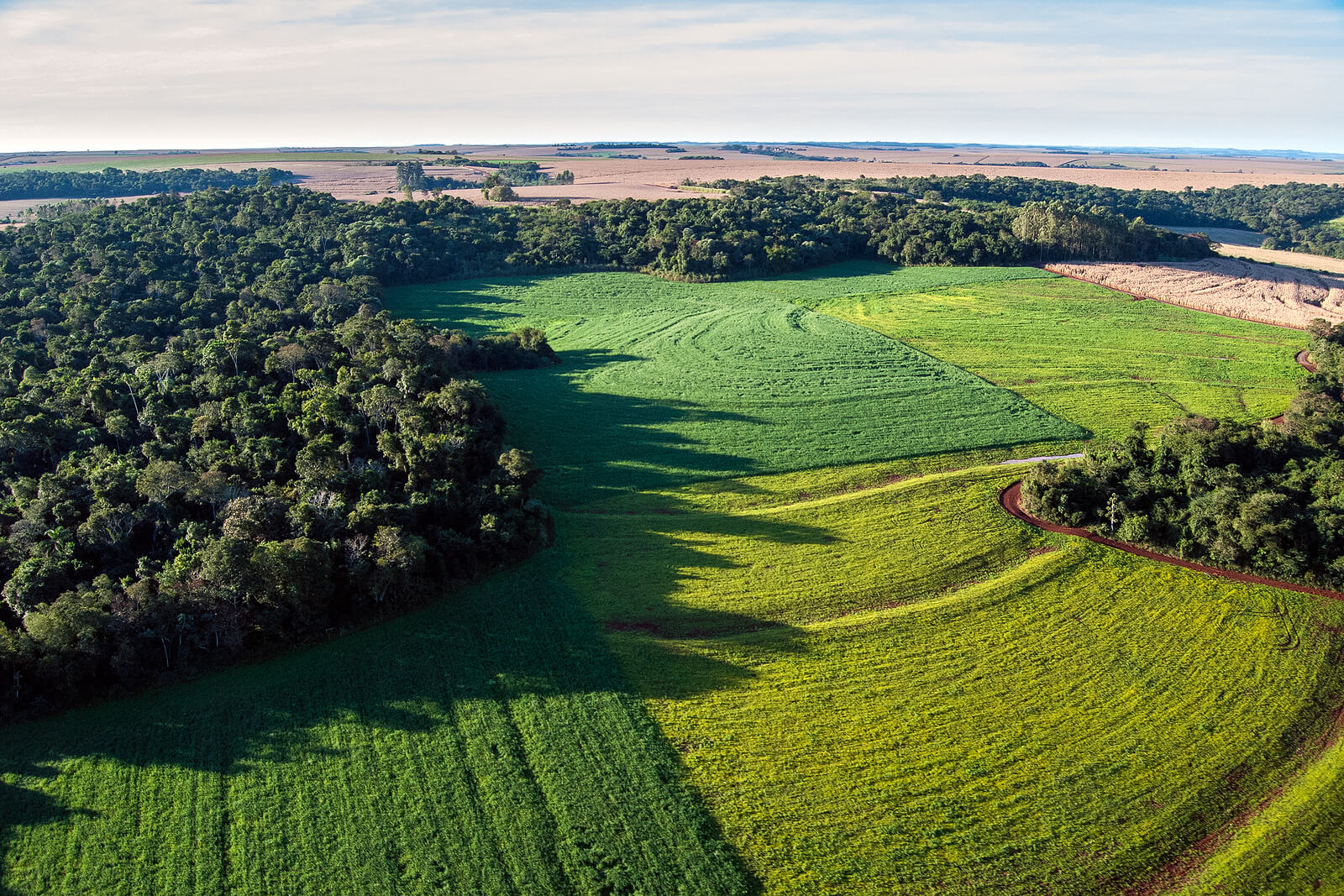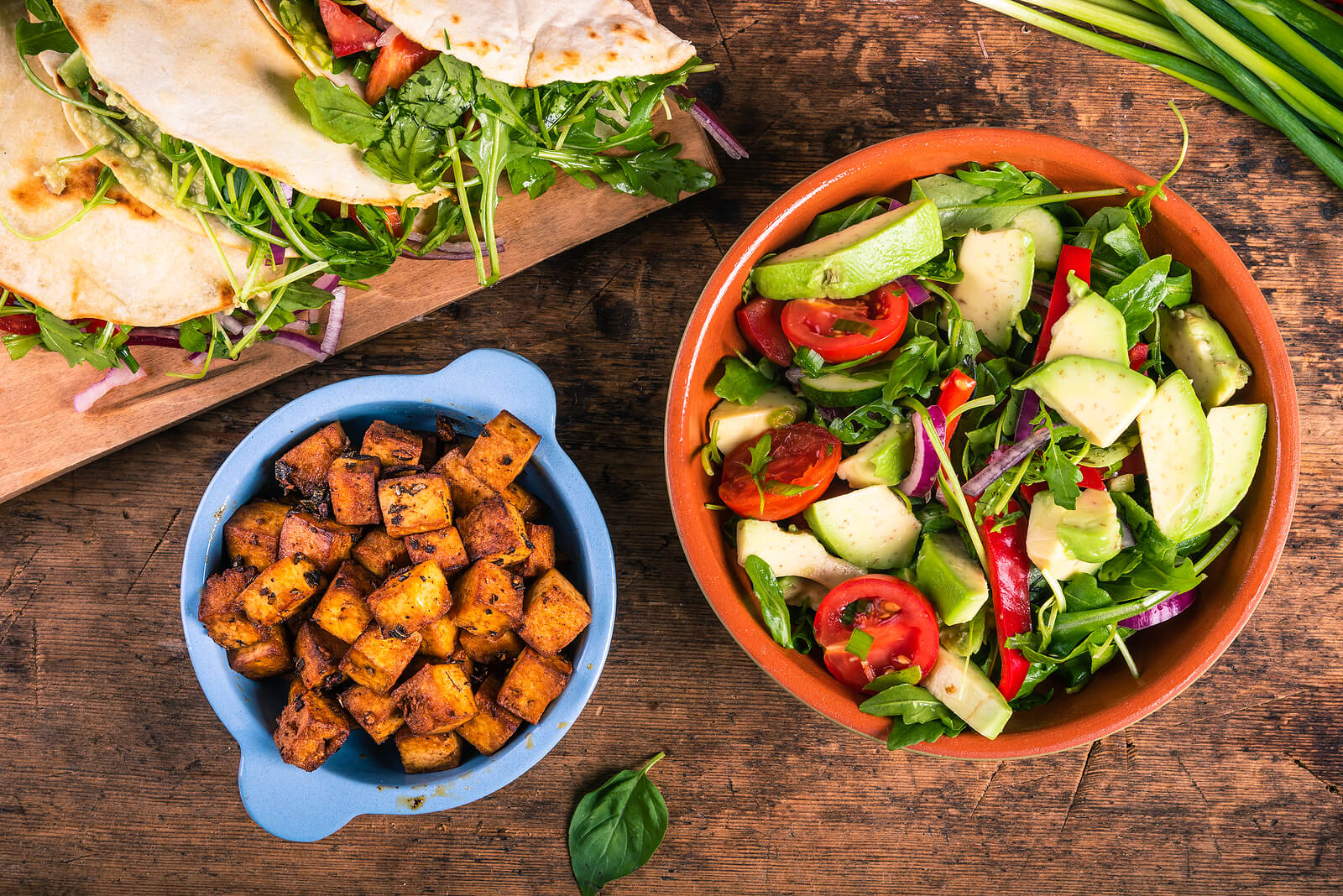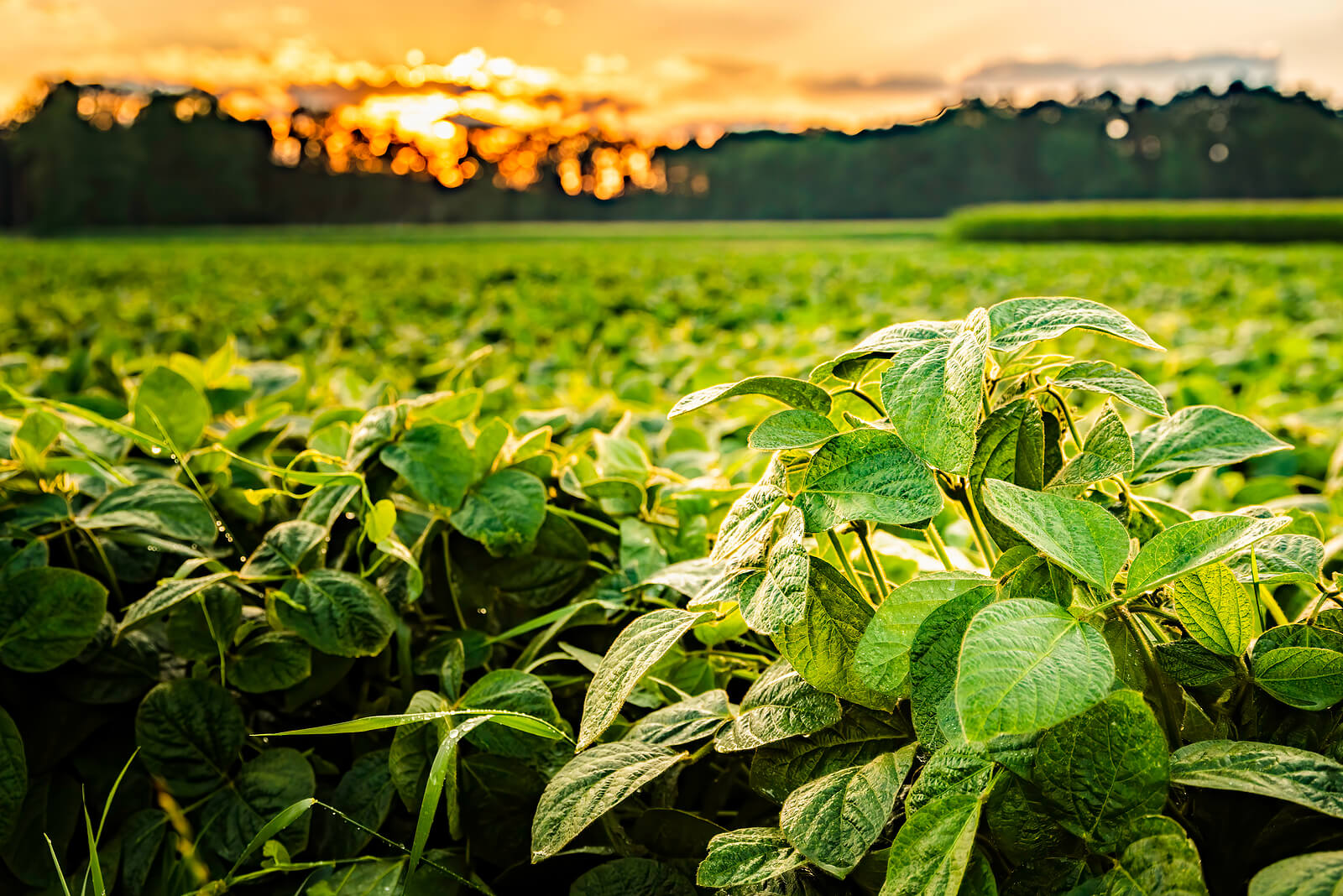Soy – whether you have it as milk, tofu, or soy sauce on your stir fry, you’ve more than likely consumed at least some soy products in your life.
The humble soybean has been a staple ingredient in Asian cooking for more than a millennia and has since made its grand existence known in the western world during the past 100 years.
Since becoming popular in the west, the soy industry has become one of the most profitable agricultural sectors in the world. It’s especially popular among vegans, vegetarians, and health-conscious folk, and, as such, its production has increased 15 times in the past 50 years alone.
But is that increase down to human consumption alone? The answer is no, not even close. While the stereotype is that it’s primarily those following a strict vegan diet who are eating all the soy, it’s technically the meat-eaters. You might be wondering how that works, and rightly so. But it’s because of how much soy goes into the meat industry.
When it comes down to the numbers, only 6% of the world’s soy produce is consumed by humans. In contrast, a whopping 80% of the world’s soybeans are fed to the farmed animals later sold as produce down the meat aisles in our supermarkets.
Soy is fed to farmed animals in the meat industry because it is cheap to grow and effective in feeding a healthy diet to the chickens, cows, pigs, and fish that are sold as produce. Because of this, soya beans are more likely to be eaten by humans when they eat meat than when they eat it through a dairy and meat-free diet. An estimated 86% of the UK population still regularly eats meat as part of their diet.
So, if soy is bad for the environment, why is it being produced on such a grand scale? Let’s take a deep dive into the soy industry and the health benefits of soya beans to get an answer to the burning question – is soy worse for the environment than meat?
Is soy good for you?

For many, soy is a renowned superfood, offering a range of health benefits when incorporated into an everyday diet. Native to East Asia and a popular ingredient regularly used in Asian cooking, the advantages of this super-legume has spread west among both meat-free consumers and those who are health-conscious.
Soy improves heart health
One of the main health benefits of soya beans is how they can improve your heart health. A 2020 study of 200,000 people found that those who ate at least one portion of soya per week (usually through tofu or soya milk) were 18% less likely to experience heart disease than those who didn’t include any form of soya in their diet at all.
A cholesterol-free legume, soya beans also have isoflavones, which are plant compounds packed with high estrogen levels. These isoflavones have been proven to help with the lining of blood vessels, reducing damage caused to the arteries and, ultimately, the heart.
Soy is a source of protein
Another health benefit of soya beans is that they have such a high protein content. Often used to replace meat within vegan and vegetarian diets, soy has more protein and carbohydrates than beef.
When considering a portion of soy and a portion of beef in equal 100g measures, soy has more than double the amount of protein. While a 100g serving of steak contains 23g of protein, the same portion size of soy has an impressive 49.2g. Not to mention, soy has 35.9g of carbohydrates, which are a fantastic source of energy, while the serving of steak has no carbs.
Soy is good for your bones
As children, our parents encouraged us to drink our milk to strengthen our bones. However, while many would reach for the standard pint of cow’s milk, bone health can also be improved and maintained just as well with soy milk.
The average adult needs to consume around 700mg of calcium every day as part of their daily diet to maintain healthy bones and muscles. Much of this required calcium comes from leafy greens, bread, and milk and cheese for those with dairy in their regular diet.
For non-dairy consumers, however, it’s easy to get enough calcium from soy-based products. You can get 25mg of calcium in one small glass of soy milk. When combined with your usual diet, you’ll still be getting plenty of what you need to be healthy.
How is soy bad for the environment?

While this super legume offers an array of health benefits, it’s difficult to ignore soy’s environmental impact. Its high production demand is dominantly to feed the meat industry, which raked in just shy of £617 billion worldwide in 2020 alone. When soy farming focuses purely on human consumption, its environmental impact is a non-issue. However, the impact is astronomical when farmed on such a grand scale to feed the meat industry.
Impacted water resources
A vast amount of water is needed to keep up with the high demand for soy growing. To produce just one litre of soy milk requires a shocking 300 litres of water. Using large measures of water at this scale and speed is entirely unsustainable, as it hugely exhausts our limited stores of natural underground water sources.
Not only does soy farming require so much water, but it also makes it harder to allow more water to seep back through into the ground. Large tractors and other heavy-duty farming equipment needed for mass soy farming play a toll on the earth, compacting the soil in such a way that makes it difficult for water to be reabsorbed back into underground stores. This, in turn, leads to a huge loss of water needed for local communities and the local flora and fauna which relies on these water sources to survive. Any water that is left is also contaminated with the many pesticides used to deter insects and wildlife from eating the produce, making the water unsafe to drink.
Widespread deforestation
As with most mass farming, soy farming causes widespread deforestation. This is especially the case for soy farming in the Amazon rainforest, where the land cultivated for soy expands by more than 14% every year. In 2018 alone, land dedicated to soy growing covered 57 million hectares.
The leading cause for this large scale of deforestation comes down to how soy grows. It can only produce one yield per cycle, and it is entirely unresponsive to commonly used growing chemicals like fertilizers.
New soy has to be planted across more land to meet the continuously growing demand for soy. The space needed to produce soy globally covers the entirety of Germany, France, Belgium, and the Netherlands. To put into perspective why soy is bad for the environment, it is the second-largest agricultural driver of deforestation, following closely after beef.
Reduced biodiversity
With widespread deforestation comes a devastating loss of habitats and vital ecosystems. Inevitably, this loss also significantly reduces biodiversity, as species no longer have a space to live, thrive, and reproduce.
Brazil is one of the primary cultivators of soy, sharing 80% with other big hitters, Argentina and the US. However, the tropical savannah region in Brazil is home to 5% of the species on earth. Their ecosystems are being destroyed to nearly half of what was once there, so too are their species. This is vital life that everyone and everything on earth relies on, but it is now all dying out because the vegetation it relies on has largely disappeared.
Increase of carbon emissions
The soy environmental impact also affects our climate on a dangerously significant scale. Mass soy farming produces large amounts of greenhouse gasses, and cultivating land for agricultural purposes is the leading cause of these emissions.
Historically, we once relied on the earth’s forest lands to help with carbon emissions, as they absorb so much of it. The Amazon rainforest, for example, has absorbed 76 billion tonnes of CO2, which equates to 21 years of Europe’s emissions.
However, there’s only so much CO2 each forest can hold, and there are fewer places emissions can be stored because of how much of our forested lands we have and are destroying. With so many emissions being produced and so little forestland left to contain it, these emissions are now being released into our atmosphere.
How is soy good for the environment?

There’s no denying that the soy environmental impact can be worrisome, as the rate at which it is going has a detrimental effect on the planet. However, it doesn’t have to be like this.
As we’ve discovered, the problem stems from the meat industry. Because meat products are in such high demand, so too is the steady growth of the soy industry. The more meat we consume, the more soy is grown, leading to further deforestation, reduced water sources, and increased carbon emissions released into our already delicate atmosphere. That then leads us to quite an ironic solution, which is to eat more soy.
When soy is produced solely for human consumption as an alternative protein source to meat, the demand for soy reduces. This is because the farming of animals will slowly reduce. You might think this means the land used for animal farming will simply be swapped for farming soy, but it’s not the case because livestock farming requires much more land. To get the same amount of protein from beef as you would from soy requires 32 times more land. If everyone were to swap meat for soy, agricultural deforestation would reduce by an estimated 94%.
To minimize our environmental impact, it’s clear that reducing our meat intake is one of the leading solutions. If you’re a regular meat-eater, try reducing your beef, chicken, or pork dishes to just a few times a week. You can then gradually lean away from meat altogether as you soon discover delicious new vegetarian and vegan dishes, many of which can be made with soy. You’ll reap the health benefits of soy and be making a difference to the overall health of the planet.

Hi, I can not disagree with this writing but what puzzles me greatly is there seems a chunk missing about why meat producing farmers feed so much concentrate to animals in modern farming methods.
What was farming like a few decades ago, what did farmers feed their stock with, how did they house their stock, how did they tend the land, why have farmers been driven to current farming practices, why do farmers see the smallest profits from their toil, why is the supply industry to farmers so costly, why is there so much food waste?
I am sure that animals farming is sustainable but not with methods used in industrial farming practices and monoculture ideas. Farms need to be diverse, farms need to be feeding by-products to their stock such as pea plants after harvest, cabbage leaves for 2 silly examples. Sheep eat mainly grass so I’d imagine little impact environmentally, pigs eat almost anything they could clear vegetable fields after harvest rooting up the ground pooping as they go. I know simplistic idea but not new ones old sustainable ideas.
I do agree we as humans do consume more meat than we require or should do but if we are importing grains etc from other countries this has a dreadful effect on those countries and the planet of energy consumption.
We need sympathetic farming for environment and animals. We should greatly reduce processed food, food waste, convenience foods, eat a healthy home cooked meal from scratch. Our world is being destroyed by consumerism, by brain washing people to care more for wants than needs, the money system is the down fall to few collecting the chief share these are the ones reasonable for how our world is today. It is such a huge topic we need it looked at holistically not buts in isolation.
Please excuse my spelling, typing and general writing, not an excuse but I’m chronically dyslexic and a bit of a thinker
Non Organic Soy like that of usa soy beans for example in Impossible Burgers is terrible for your body and the planet.This article misses important growing techniques and skips the negative impact that soy has on water and soil. Think glyposates /aka roundup. There was a 3rd party study done on non organic soybeans.Lab tested. This is not a pro beef comment .I just want people to get all there info. Do a deep dive that takes more than 10 minutes of your time. Be truly informed.
In “How is Soy Bad for the Environment?” she covers exactly what you’re talking about. Did you read the article? Also, it’s difficult for me to take anyone who doesn’t know when to use “there” and “their” seriously.